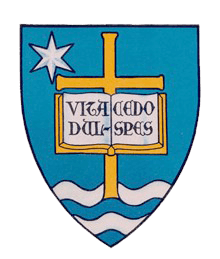Notre Dame College of Science
| College of Science | |
|---|---|
| College of Science at the University of Notre Dame du Lac | |
 | |
| Established | 1865 |
| Type | College |
| Parent institution | University of Notre Dame |
| Location | South Bend, Indiana, Indiana, United States |
| Dean | Mary Galvin |
| Academic staff | 550 |
| Undergraduates | 1,680 |
| Postgraduates | 450 |
| Website | http://science.nd.edu/ |
The College of Science is a college within the University of Notre Dame. The Dean of the College of Science is Mary Galvin, Ph.D.[1]
History
The College of Science is established in 1865 by Rev. John Zahm,C.S.C., and in 1884 the first Science Hall is built (now LaFortune Student Center).
Rev. Julius Nieuwland, C.S.C., a Notre Dame chemist and botanist, establishes 1909 The American Midland Naturalist, a Midwestern plant life quarterly that today is an international journal of ecology, evolution, and the environment. His research leads to the development in 1930 at DuPont industries of Neoprene, the first synthetic rubber. Because of his contribution, in 1952 DuPont paid in part the construction of Nieuwland Science Hall, that to this day hosts research in physics and chemistry.

The Laboratories of Bacteriology at the University of Notre Dame (LOBUND) is established in 1935 after the germ-free research of Prof. James Reyniers. The LOBUND attracts top scientists and became the world’s leader institution in germ-free research.
The first whole-ecosystem experiment is performed in 1951 on about 7,500 acres on the Wisconsin-Michigan border at the University of Notre Dame Environmental Research Center (UNDERC), land owned by the University comprising several lakes and used for environmental research.
Prof. George B. Craig Jr. becomes the director of the Vector Biology Laboratory in 1957 and, for the next two decades, performs important research into the genetics of Aedes aegypti. The New York Times called Craig "one of the world's foremost experts on mosquitoes".[2] and the National Academies Press called him "an internationally recognized expert on the biology and control of mosquitoes" and that his "contributions made ... to medical entomology are almost incalculable".[3] The Jordan Hall of Science opens in 2006, after an investment of more than $70 million donated by Chicago business man Jay Jordan. The Hall includes a Digital Visualization Theater, 40 teaching labs, two lecture halls, an observatory, a greenhouse, and a space exhibiting the extensive plant collection of Rev. Nieuwland. In 2005 Notre Dame is part of a consortium that sponsored the Large Binocular Telescope.
Departments
- Department of Applied and Computational Mathematics and Statistics
- Department of Biological Sciences
- Department of Chemistry and Biochemistry
- Department of Mathematics
- Department of Physics
- Preprofessional Studies (not a proper department per se, but a program that offer pre-Medical preparation for undergraduates)
Facilities
The College of Science has facilities in Jordan Hall, Galvin Hall, Stepan Chemistry Hall, Nieuwland Hall, Harper Hall, and other locations on campus. UNDERC is a center for environmental studies located on the Wisconsin-Michigan border.
 Jordan Hall, home of the College of Science. It hosts 40 laboratories, an observatory, two lecture halls, and a greenhouse.
Jordan Hall, home of the College of Science. It hosts 40 laboratories, an observatory, two lecture halls, and a greenhouse. McCourtney Hall, built in 2016, Biochemistry and Bio-engineering.
McCourtney Hall, built in 2016, Biochemistry and Bio-engineering. Nieuwland Hall, home to the Department of Physics and the Department of Chemistry and Biochemistry. Nieuwland is also home to a brand new low-energy nuclear accelerator.
Nieuwland Hall, home to the Department of Physics and the Department of Chemistry and Biochemistry. Nieuwland is also home to a brand new low-energy nuclear accelerator. Hayes Healy Hall, home of the department of Mathematics and the O’Meara Mathematics Library.
Hayes Healy Hall, home of the department of Mathematics and the O’Meara Mathematics Library. Stepan Chemistry Hall, houses chemistry faculty offices and laboratories.
Stepan Chemistry Hall, houses chemistry faculty offices and laboratories.
 Galvin Hall, home of the Biological Sciences department, classrooms, offices and research labs.
Galvin Hall, home of the Biological Sciences department, classrooms, offices and research labs. Hurley Hall, houses the department of Department of Applied and Computational Mathematics and Statistics.
Hurley Hall, houses the department of Department of Applied and Computational Mathematics and Statistics.
List of deans
- Rev. Julius Nieuwland (1921-1923)
- Rev. Francis J. Wenninger (1923-1940)
- Henry B. Froning (1940-1943)
- Lawrence H. Baldinger (1943-1960)
- Frederick D. Rossini (1960-1967)
- Bernard Waldman (1967-1979)
- Francis J. Castellino (1979-2002)
- Joseph P. Marino (2002-2008)
- Gregory Crawford (2008-2015)
- Mary Galvin (2015-current)